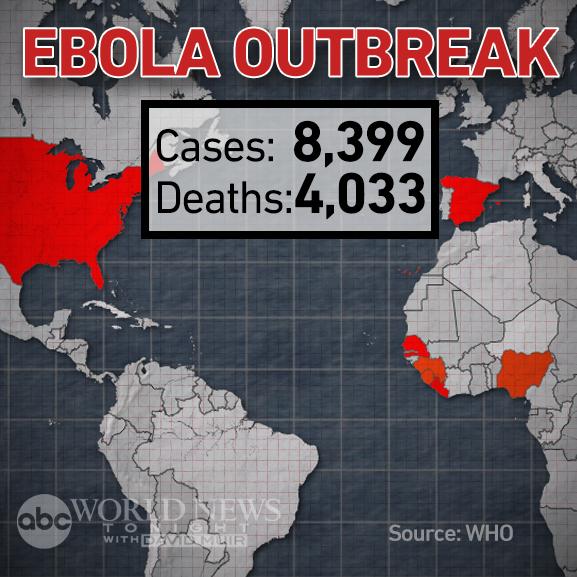
There are allegations that Ebola could not be airborne
But USAMRIID (US Army Medical Research Institute of Infection Disease reports this to be airborne as early as 1990 (I guess this is the basis of the movie "Outbreak."
The narration beginning on page 273 narrates an airborne Ebola, unlike what the current USA administration is suggestion. This is contained in the book Hot Zone by Richard Preston...
From Scientific American - Ebola could be airborne

"
"Ebola... jumped quickly from room to room... a lot like influenza"
What happened in that building was a kind of experiment. Now they would see what Ebola could do naturally in a population of monkeys living in a confined space, in a kind of city, as it were.The Ebola Reston virus jumped quickly from room to room, and as it blossomed in the monkeys, it seemed to mutate spontaneously into something that looked quite a lot like influenza. But it was an Ebola flu.
The monkeys died with great quantities of clear mucus and green mucus running from their noses, mixed with blood that would not clot. Their lungs were destroyed, rotten and swimming with Ebola virus. They had pneumonia. When a single animal with a nosebleed showed up in a room, generally 80 percent of the animals died in that room shortly afterward. The virus was extraordinarily contagious in monkeys.
"...could look like the flu... a different strain could appear in a month's time... drifted through the air-handling ducts"
The Institute scientists suspected that they were seeing a mutant strain of Ebola, something new and a little different from what they had seen just a month before, in December, when the Army had nuked the monkey house. It was frightening -- it was as if Ebola could change its character fast -- and could look like the flu. As if a different strain could appear in a month's time.The clinical symptoms of the disease served as a reminder of the fact that Ebola is related to certain kinds of flu-like illnesses seen in human children. It seems that the virus could adapt quickly to new hosts, and that it could change its character spontaneously and rapidly as it entered a new population.
Ebola apparently drifted through the building's air-handling ducts. By January 24, it had entered Room B, and monkeys in that room started going into shock and dying with runny noses, red eyes, and masklike expressions on their faces. In the following weeks, the infection entered rooms I, F, E, and D, and the animals in these rooms virtually all died.
"USAMRIID concluded that Ebola can spread through the air"
John Coleus certainly caught the virus when he cut himself with a bloody scalpel, no question about that. What is more worrisome is that the others did NOT cut themselves, yet the virus still entered their bloodstreams. It got there somehow. Most likely it entered their blood through contact with the lungs. It infected them through the air.When it became apparently to the Army researchers that three of the four men who became infected had not cut themselves, just about everyone at USAMRIID concluded that Ebola can spread through the air.
Photos of the pages from the physical book, published in 1994















